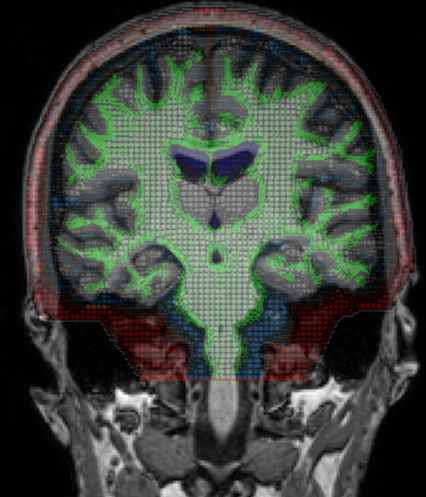Newsroom
RMU Part of National Head Trauma Study
Three-year, $10 million study is funded by the U.S. Office of Naval Research.

An RMU professor who uses computer simulations of the human head to study damage caused by impact is part of a $10 million national research project to reduce traumatic brain injuries.
Rika Carlsen, an associate professor of mechanical and biomedical engineering, is one of the scientists taking part in the PANTHER program, funded by the U.S. Office of Naval Research. The three-year program includes scientists from government laboratories, the industry sector, and several universities.
Carlsen’s role will be to expand her research and simulations with a highly detailed computer model of a human head, including the skull, fluids and brain tissue, to be used in simulations testing response to low intensity or sub-concussive impacts and blows, as well as higher severity impacts and blast waves from explosions.
“A lot of injury happens at the cellular level, and to figure out how the head transmits the damage to the cells is a difficult question,” Carlsen said. “We try to incorporate a lot of that microstructural information into our models.”
The university’s portion of the federal grant money is expected to be $750,000, and will fund Carlsen’s research and the hiring of two post-doctoral researchers with expertise in computational modeling to assist her starting in January. Carlsen also will continue to teach undergraduate courses at the School of Engineering, Mathematics and Science, where she is the coordinator of the biomedical engineering program and director of innovation of the school’s Outreach and Innovation Center.
RMU is one of eight colleges partnering in the PANTHER project, along with Brown University, Johns Hopkins University, the University of Southern California, the University of Texas, the University of Wisconsin, Iowa State University, and the Colorado School of Mines.
“It’s an impressive team and it’s definitely an honor to be part of this group with all these researchers,” Carlsen said. She used to work in the same laboratory as one of the scientists in the new study, Leslie Lamberson at the Colorado School of Mines; they were both at Johns Hopkins then, Carlsen finishing her Ph.D. while Lamberson was a post-doctoral researcher.
Research projects under the umbrella of the PANTHER project include developing better sensors and helmets, improving concussion tests, and various computer modeling approaches. Carlsen has been running her simulations at the Pittsburgh Supercomputing Center and said she looks forward to contributing to the project.
“For me, the driving force is doing something that’s really going to help other people. It’s an important problem to study that can’t be solved by yourself; you have to work with a team. This is a great opportunity to make progress on this particular problem,” she said.
